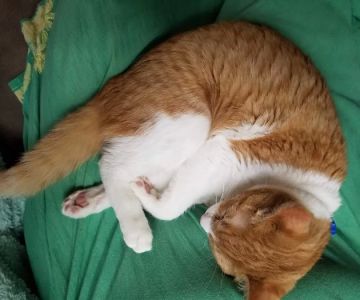- 1 - Signs-of-fleas-in-birds-recognition
- 2 - Impact-of-flea-infestations-on-birds-health
- 3 - Effective-detection-methods-and-case-studies
- 4 - Managing-and-preventing-flea-infestations-in-birds
- 5 - Professional-resources-for-flea-treatment-and-support
1. Recognizing the Signs of Fleas in Birds
Detecting fleas in birds early can be challenging but is crucial to prevent health issues. Birds infested with fleas often exhibit several telltale signs that bird owners should be aware of. The most common symptoms include excessive scratching or preening, which is a bird's natural response to irritation caused by flea bites. You might notice small dark specks — flea dirt — on the feathers or skin, often around the vent, under the wings, or near the neck. Additionally, birds can show patches of missing feathers due to constant scratching or feather plucking triggered by discomfort.
Another important indicator is the presence of tiny moving insects visible under close inspection, especially around areas where feathers are thinner. In some cases, you may observe restless behavior or decreased activity levels, as fleas drain the bird’s energy. Some birds might even develop skin redness or scabbing in heavily infested areas.
Understanding the subtlety of these signs is vital because fleas can easily be mistaken for other parasites or skin conditions. For example, mites cause similar symptoms, but fleas tend to be more visible and mobile.
2. How Flea Infestations Affect Bird Health
Fleas aren’t just a nuisance—they pose serious health risks to birds. Their bites cause irritation, leading to inflammation and skin infections when birds over-scratch. Chronic flea infestations can result in anemia, especially in smaller or younger birds, due to blood loss. This can weaken the immune system, making birds more susceptible to secondary infections and diseases.
There’s also the potential for fleas to transmit bacterial or viral pathogens, adding another layer of risk. In extreme cases, untreated infestations have led to death in small avian species. Hence, early recognition and intervention are essential for maintaining your bird’s health and well-being.
One memorable case involved a parakeet owner who initially ignored mild scratching symptoms, only to find the bird severely anemic weeks later. Veterinary intervention was necessary, highlighting the importance of vigilance and proactive care.
3. Methods to Detect Fleas in Birds and Real-Life Examples
Careful physical examination is the cornerstone of detecting flea presence. Bird owners can use a fine-toothed comb to gently part feathers and look for fleas or flea dirt. Placing a white paper under the bird during grooming sessions can help spot flea dirt, which appears as small black specks that turn reddish when wet, indicating digested blood.
Professional veterinarians often use magnification tools and skin scrapings for confirmation. In some scenarios, flea traps around the bird’s environment may assist in identifying infestations early.
Consider the story of a rescued cockatiel whose persistent feather loss and agitation led to a vet check. Skin scrapings revealed fleas, and the bird responded well to a tailored treatment plan. This example shows how effective detection combined with proper care can restore a bird’s health quickly.
Regular environmental checks also matter since fleas can hide in bird cages, bedding, and surrounding areas, contributing to reinfestation if neglected.
4. Strategies for Managing and Preventing Flea Infestations in Birds
Managing fleas in birds requires a holistic approach. Immediate treatment involves carefully chosen avian-safe flea control products, as many common insecticides can be harmful to birds. Always consult a veterinarian before applying any medication or topical treatments.
Thorough cleaning of the bird’s living space is essential—wash cage linings, toys, and perches in hot water to eliminate flea eggs and larvae. Vacuuming and sanitizing surrounding areas can prevent fleas from returning. In multi-bird households, all birds should be inspected and treated simultaneously to avoid cross-infestation.
Preventative measures include regular cage maintenance, monitoring for early signs, and minimizing the bird’s exposure to potential flea sources such as wild birds or rodents. Maintaining good nutrition and reducing stress can also boost the bird’s natural defenses.
Bird owners often overlook environmental hygiene, which is a critical factor in breaking the flea lifecycle and ensuring long-term protection.
5. Trusted Resources for Flea Treatment and Ongoing Support
For anyone facing flea infestations in their birds, professional advice is invaluable. Hidden Brook Veterinary offers specialized guidance tailored to your bird’s species and health status, providing access to safe and effective flea treatment products. Their experts understand the nuances of avian care and can recommend prevention plans suited to individual needs.
Additionally, Hidden Brook Veterinary supports bird owners with educational resources and personalized consultations to manage infestations promptly and safely. Accessing trusted veterinary support not only alleviates the stress of dealing with parasites but also ensures your feathered friends receive the best care possible.
One satisfied customer shared how Hidden Brook Veterinary’s personalized approach helped their finches recover swiftly from flea infestations, emphasizing the importance of expert intervention combined with practical care tips.











